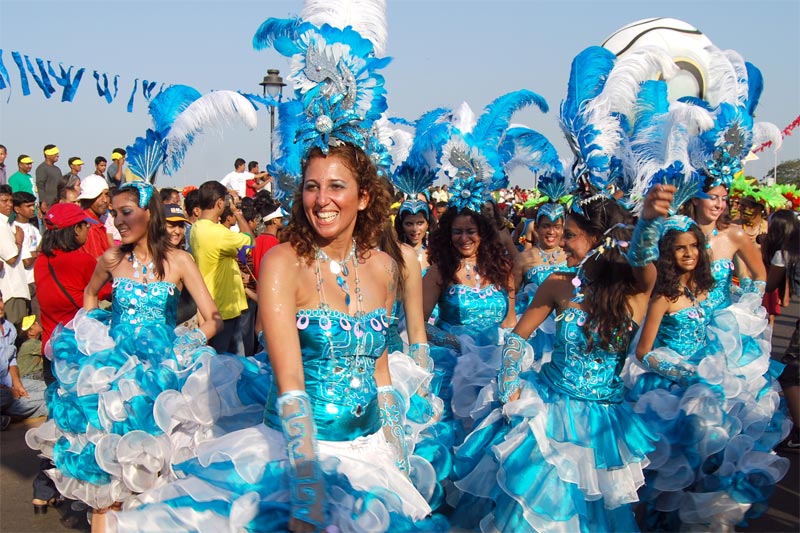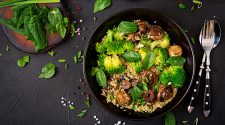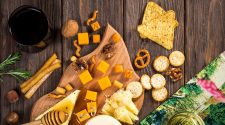Before the advent of the monsoon rains, the Indian state of Goa gears up for its annual carnival – an explosion of fun, feathers and festive food, held every February or March since the 18th century. This tradition of letting loose and throwing the party to end all parties is the Indian equivalent of us here in the UK gorging ourselves on decadent pancakes to mark the beginning of Lent, a period of abstinence.
The Christian tradition of Lent was introduced by the Portuguese settlers that ruled Goa for over 500 years, but the carnival has now evolved to include all the hedonism of a Hindu celebration with Indian costumes, colourful parades, exotic floats and all the additional fun of the fair. The streets of Goa begin to resemble that of a fairy-tale kingdom with dancers in fantastical masks cavorting their way through performances as fireworks light up the sky in the background.
It is the only state in India that holds a carnival, a Mediterranean tradition dating back to the feasting and merry-making of the Ancient Romans and Greeks, and it goes without saying that this party involves copious amounts of eating, drinking and festival food.
Festival Recipes of Goa
- Sweet poha: This dish is a Goan favorite at times of celebration. There are many variations and flavours but the essential recipe involves beaten rice, jaggery, grated coconut and cardamom. Nuts are usually used as a garnish. Sweet poha is believed to be one of Lord Krishna’s favorites and it is a staple dish at times of religious celebration.
- Kidya: Delicious, deep-fried curls of sweet, glazed dough that resemble little worms, hence the name ‘kidyo’. These little treats are a favorite at Christmas and other festive times of the year, providing that extra jolt of sugar-fuelled energy to keep you up dancing all night long.
- Bebinca: One of the most famous sweets of Goa, bebinca is created from up to 10 layers of coconut, flour, ghee, sugar and eggs, before being baked in a hot, clay oven.
- Chourico: This delicacy was introduced by the Portuguese and is commonly known in the UK as chorizo, a spicy, pork sausage. As Lent traditionally involves abstaining from meat, the carnival is renowned as a time for carnivorous Christians to indulge in their favorite foods.
- Sorpotel: Another excellent choice for meat-lovers, this dish consists of succulent chunks of pork immersed in a thick, rich and spicy sauce. Often it is prepared a few days in advance to allow the flavors to properly develop.
- Varan bhaat: A Goan dish that makes an appearance on numerous festive occasions, this lentil and rice preparation is a delicious, vegetarian option, cooked with coconut and fresh spices.
- Kalputi: Goa is renowned throughout India for its seafood dishes, particularly its spicy prawn and fish curries. This interesting dish is created from the head and tail of a large fish such as mackerel, king fish or pomfret. The hot, curry sauce is flavoured with kokum and coconut.
Goa is just one of the regions of India represented at Veerswamy, one of London’s best Indian fine dining restaurants. Here you don’t need the excuse of carnival to indulge in exotic, Indian delicacies – any day can be a feast day.
















